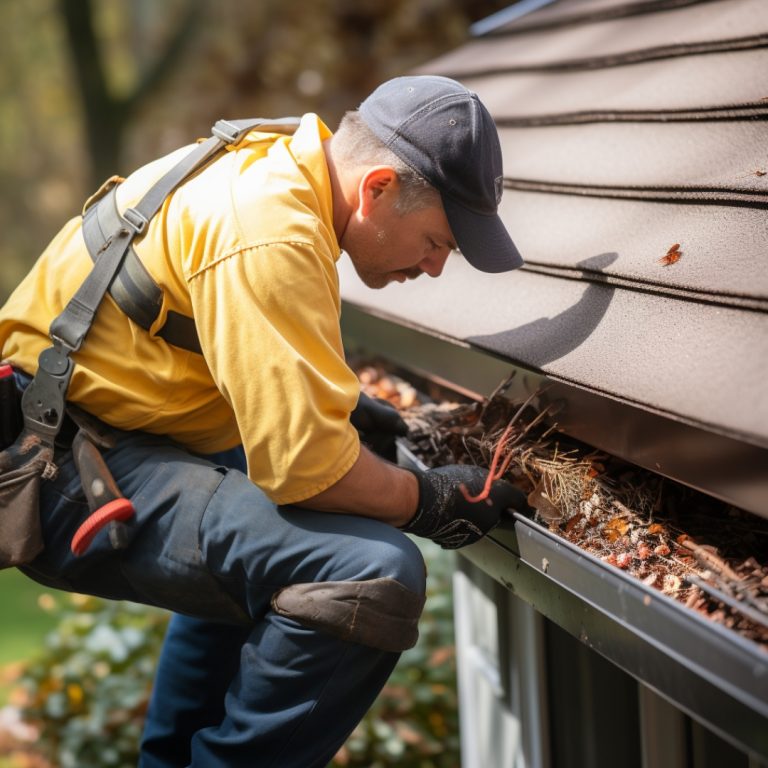Are you tired of dealing with persistent gutter issues on your home? Sagging gutters can be more than just an eyesore; they can cause significant damage to your home’s foundation and overall structural integrity. Fear not! With our ultimate guide on how to fix sagging gutters, you’ll be well-equipped to tackle this common problem and protect your home from water damage.
Key Takeaways
- Understanding the causes and importance of sagging gutters is essential for preventing water damage.
- Professional preparation, tools, materials and safety measures are necessary for successful gutter repair.
- Regular maintenance including cleaning, inspections and installation of guards will help ensure optimal functioning of your home’s drainage system.
Understanding Sagging Gutters
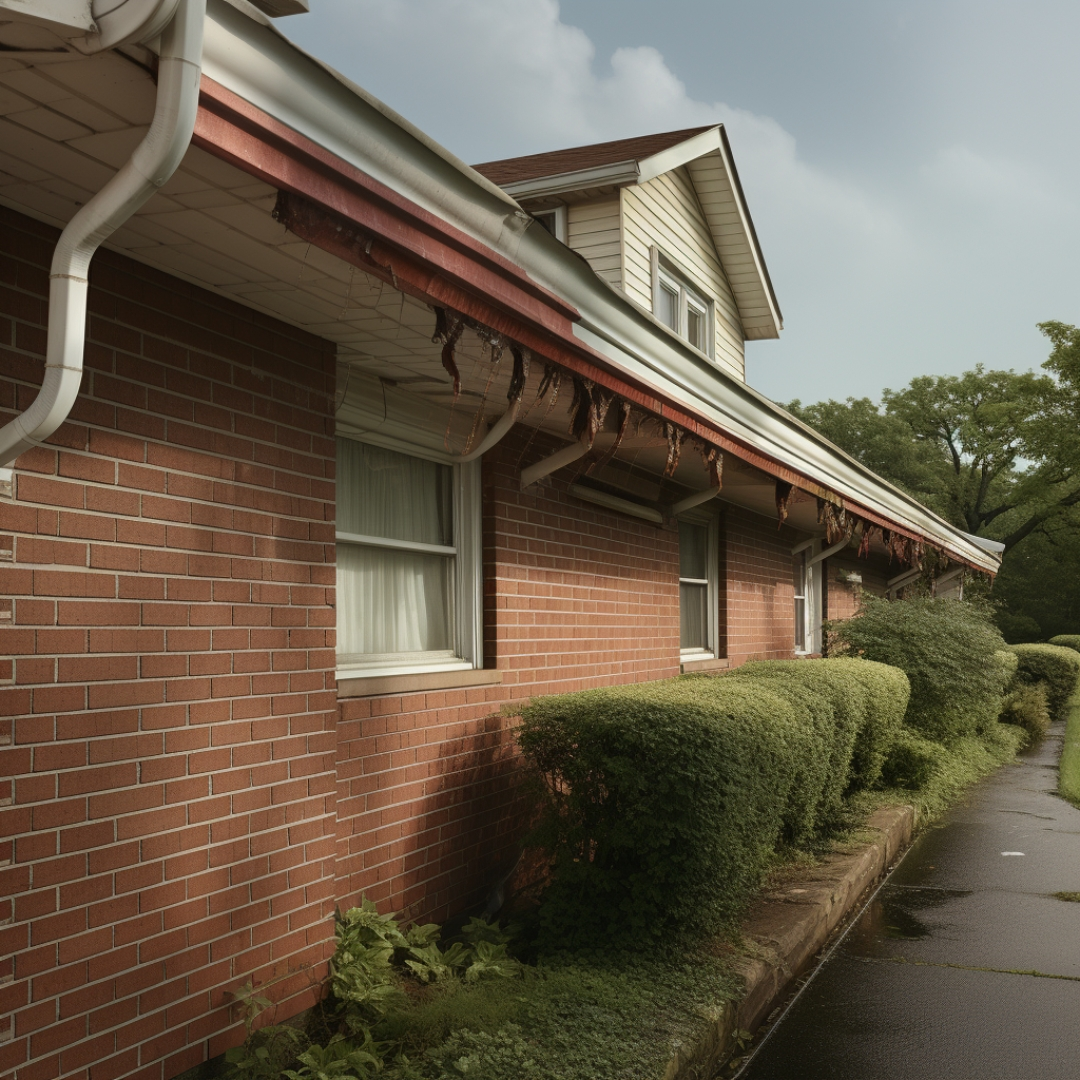
Gutters play a vital role in protecting your home from water damage and maintaining structural stability. However, problems arise when these gutters start to sag. Delaying gutter repairs may cause further harm that could eventually render your gutters inoperable, resulting in undesirable effects such as basement inundations, gutter leaks, or rainwater infiltrating through your roof.
The Importance of Gutters
Properly functioning rain gutters are integral to your home’s drainage system, directing water away from the foundation and preventing water damage. However, the functionality of these gutters diminishes when they start to sag. Therefore, it’s necessary to resolve this issue promptly before it intensifies.
Correct gutter slope is essential for ensuring water flows efficiently towards the downspouts. Inadequate slope can lead to debris accumulation in one area, resulting in sagging or bulging gutters. Maintaining the correct placement of gutter hangers aids in preserving the suitable slope and aids in preventing sagging.
Potential Problems Caused by Sagging Gutters
Sagging gutters may lead to pooling water, leaks, and possibly damage to the home’s foundation. Loose gutters can exacerbate these issues and should be addressed promptly. Gutters can sag due to loose nails or screws hanging from the fascia board, and it is important to fix sagging gutters to prevent further damage and maintain proper drainage.
If the entire length of the gutters is exhibiting signs of sagging or detachment, the entire gutter and fascia board may need to be replaced. Prolonged water exposure can lead to the deterioration of the fascia board, which can cause even more damage to your home if not addressed.
Identifying the Causes of Sagging Gutters

Recognizing the underlying reason for the sagging gutters is the initial step towards resolving the issue. Common causes include:
- Debris buildup
- Inadequate attachment to the house
- Incorrect slope
- Ice dams
- General wear and tear over time
By pinpointing the cause, you can take the appropriate steps to fix sagging gutters and prevent future issues.
Debris Buildup
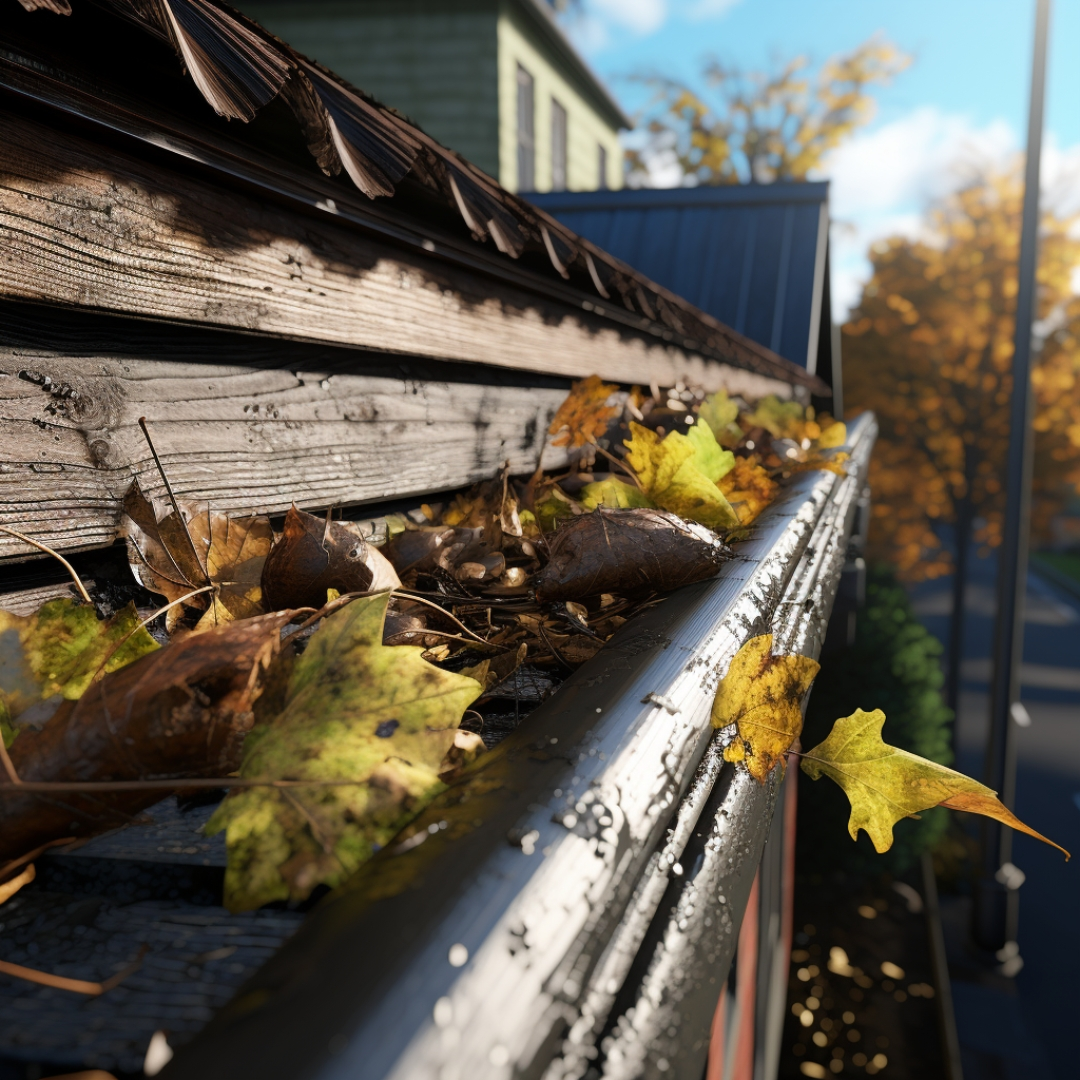
Debris buildup in gutters can include:
- Leaves
- Twigs
- Branches
- Tree leaves
- Wood chunks
- Twigs
- Roofing granules
- Broken shingles
- Fine debris like sediments and dust
This debris can add weight and strain to the gutter system, resulting in sagging over time. It is important to regularly clean and maintain your gutters to prevent clogging and damage.
Regular cleaning and maintenance of gutters are imperative to prevent sagging, possible damage, and clogged gutters.
Poor Installation
Inadequate gutter slope can cause several problems, including:
- Impeding the flow of rainwater, leading to puddling
- Increasing the weight on the gutter system, potentially causing sagging or detachment from the house
- Clogging and overflow, which can worsen the sagging issue
It is important to ensure that your gutters have the proper slope to prevent these issues.
Therefore, it is necessary to confirm that the gutters have a sufficient slope to enable effective water drainage and prevent sagging.
Damaged or Inadequate Supports
Insufficient support can lead to strain on the gutter system, resulting in sagging and detachment from the house. Uneven weight distribution along the gutter can also cause sagging. Gutter hangers are the most susceptible to damage, as they can become detached under heavy loads, resulting in the gutters collapsing. To prevent these issues, it’s essential to install a reliable gutter hanger.
Hence, it is necessary to choose high-quality hardware and strictly follow the installation guidelines to avoid sagging gutters.
Preparing for Gutter Repair
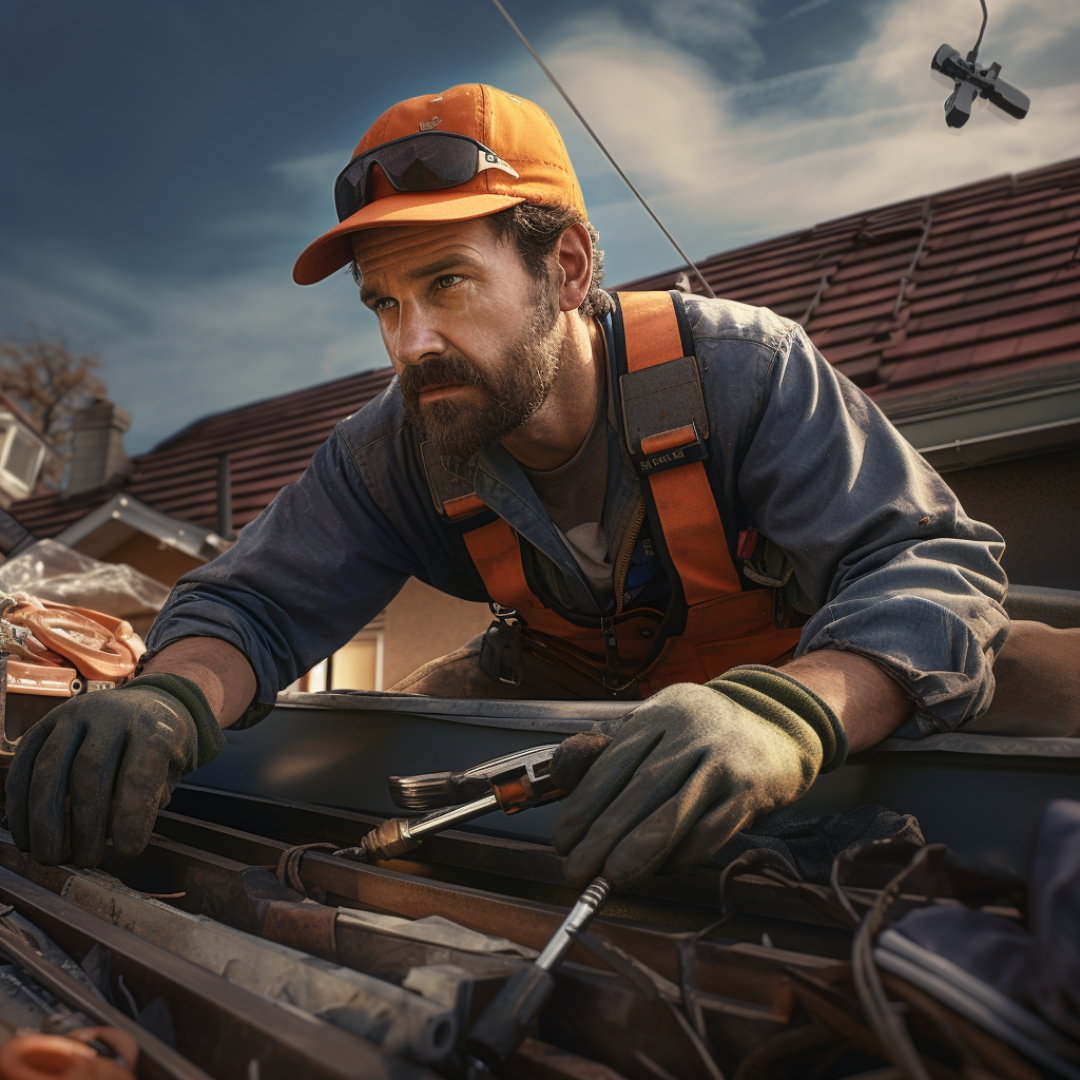
Before starting the repair process, it is important to assemble the required tools and materials and adhere to safety guidelines. This preparation will ensure a smooth and efficient repair process, helping you get your gutters back in working order quickly and safely.
Essential Tools
A ladder, gloves, bucket, and power drill are necessary for gutter repair. Extension ladders and combination ladders are the most appropriate for gutter repair, and disposable gloves are the best option for working on gutters as they offer good protection and can be easily disposed of after use.
Also, a putty knife, caulking gun, and sealant are other vital tools needed for gutter repair.
Required Materials
New supports, fasteners, and sealant are necessary for gutter repair. Some suitable supports for sagging gutters include:
- Gutter hangers
- Brackets
- Straps
- Gutter spikes
- Screws
- Hidden gutter brackets
These supports help firmly attach the gutters to the fascia board and prevent sagging.
Safety Measures
Safety is of utmost importance when repairing sagging gutters. To ensure your safety, follow these guidelines:
- Use the appropriate ladder and make sure it is set up safely.
- Wear proper protective clothing and equipment, such as safety glasses, leather or work gloves.
- Gather the necessary tools for the repair, including a ladder, a screwdriver, and a marker and pencil.
By following these safety precautions, you can effectively repair sagging gutters without putting yourself at risk.
Step-by-Step Guide to Fixing Sagging Gutters
With the necessary tools and materials at hand, you’re now ready to address those sagging gutters! Follow this comprehensive guide to repair sagging gutters, which includes:
- Cleaning
- Slope adjustment
- Support repair
- Leak sealing
Cleaning and Inspecting Gutters
Begin by cleaning and inspecting the gutters to identify the cause of sagging and assess the extent of the damage. Here are the steps to follow:
- Manually remove debris from the gutter using a scoop or small plastic shovel, standing on a ladder or using a telescoping wand.
- Clear the debris using a rake or by hand.
- Use a garden hose with a high-pressure stream of water to dislodge debris from the gutters. Avoid using power washers, as they can cause damage to the gutter sections.
- Regular cleaning of gutters should be done at least once a year to prevent serious damage to the home.
Once the cleaning is done, examine the gutters for any indications of damage, such as:
- Sagging
- Leaking
- Debris buildup
- Poor installation
- Damaged or inadequate supports that may be causing the sagging gutters
Check for these issues to ensure the proper functioning of your gutters.
Adjusting Gutter Slope
If your gutter slope is inadequate, it’s time to make adjustments to ensure proper drainage and prevent further sagging. Here’s what you can do:
- Check for any debris or clogs in the gutters. If found, clear them away.
- Identify the areas where the gutters are sagging.
- Tighten the screws or brackets that hold the gutters in place to ensure they are secure.
- Utilize a level to determine the correct slope for the gutters.
Subsequently, adjust the slope by following these steps:
- Loosen the gutter screws or brackets that hold the gutters in place.
- Reposition the gutters to the desired angle.
- Finally, once the gutters are in the correct position, tighten the gutter screws or brackets to secure them in place.
Replacing or Repairing Supports
To replace or repair damaged supports, follow these steps:
- Remove the old gutter hangers or brackets.
- Clean the area where the new supports will be installed.
- Measure and mark the locations for the new gutter supports.
- Install the new hangers or brackets, ensuring they are securely attached.
Finally, attach the gutters to the new supports and examine the stability of the gutters to ensure they are adequately supported.
Sealing Leaks and Cracks
Sealing leaks and cracks in the gutter system is crucial to prevent water damage and maintain the structural integrity of your home. Recommended sealants for sealing leaks in gutters include:
- Silicone
- Polyurethane
- Butyl rubber
- Acrylic
- Epoxy
Apply the sealant using a caulking gun or directly with a brush or spatula to the affected areas, such as cracks, holes, or leaking joints.
When to Call a Professional
Despite your diligent efforts, there might be times when you’ll need professional assistance to repair your sagging gutters. Knowing when to call a professional gutter company can save you time, money, and prevent further damage to your home.
Assessing Damage Severity
To ascertain the need for professional assistance, evaluate the severity of your gutter damage by observing for signs such as:
- Water overflow from gutters
- Water leakage into the basement
- Sagging or warped gutters
- Detached or uplifted gutters
- Presence of bird’s nests or other pest infestations in the gutters
- Visible cracks, peeling paint, or rust on the gutters
If any of these signs are present, it may be time to call a professional for help.
Gutter Replacement
If the damage is too severe or the gutter system is irreparable, gutter replacement might be required. The cost of gutters varies greatly depending on the type of material being installed. It can range from $4 to $30 per linear foot..
Substitute defective gutters with new gutters, specifically seamless gutters and metal gutters, to avoid potential issues with your roof in the future. Include gutter guards to protect from debris buildup.
Benefits of Professional Services

Utilizing professional gutter services can offer several benefits:
- The job is completed accurately and securely
- Time and money can be saved over the long term
- Professionals ensure proper installation of gutters by adhering to established best practices
- Extra precautions are taken to avert any damage to the home
Preventative Measures and Maintenance
To maintain the good condition of your gutters and avoid future sagging, it is important to implement preventative measures and regular maintenance.
By adhering to these tips, you can mitigate the risk of gutter damage and ensure your home stays safeguarded from water damage.
Routine Cleaning
Regular cleaning is fundamental in maintaining your gutters and averting sagging. Clean your gutters at least twice a year to prevent clogs that could impede the flow of rain or melting snow and ice from passing through the gutters and away from the foundation.
By ensuring your gutters are clear, you can contribute to safeguarding your home from water damage and other complications.
Gutter Guards
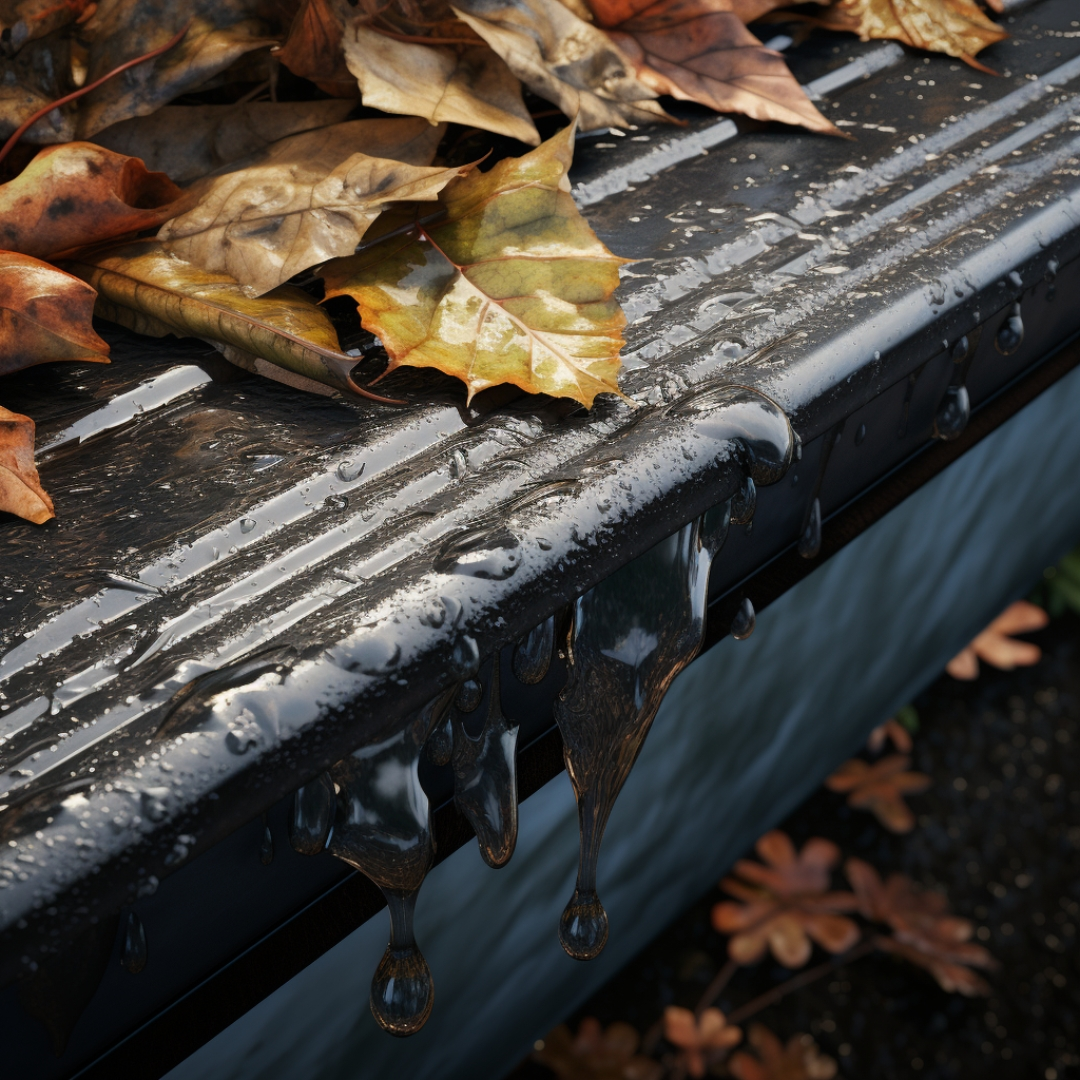
Installing gutter guards can help keep debris out of your gutter system and reduce the need for frequent cleaning. There are several types of gutter guards available on the market, such as:
- Screen gutter guards
- Mesh gutter guards
- Micro-mesh gutter guards
- Reverse-curve gutter guards
- Brush gutter guards
- Foam gutter guards
Choose the best option for your home to minimize debris buildup and keep your gutters functioning optimally.
Regular Inspections
Examine your gutter system at least bi-annually for indications of damage, such as:
- sagging
- leaking
- clogging
- rusting
- loose or missing fasteners
Regular inspections can help identify potential problems before they become major issues, allowing you to address them promptly and maintain the health of your gutter system.
Summary
In conclusion, fixing sagging gutters is an essential task to maintain the structural integrity of your home and prevent water damage. By understanding the causes of sagging gutters and following a step-by-step guide to repair them, you can keep your gutter system in optimal condition. Don’t forget to practice regular maintenance and preventative measures to minimize the risk of future issues. With these tips in hand, you’re well on your way to protecting your home from water damage and ensuring your gutters remain in excellent shape.
Frequently Asked Questions
What does it mean when gutters sag?
Gutters that sag or hang low usually indicate that the gutter system has exceeded its capacity due to too much debris buildup, poor attachment to the house, misaligned slope, ice dams or age. Regular maintenance can help identify and prevent these issues from becoming major problems.
How do you fix tilt on gutters?
To fix tilt on gutters, adjust the hangers to achieve the proper slope by loosening the screws and repositioning the hanger. Tighten the screws to secure the hanger in place.
How do you fix standing water in gutters?
Remove any clogs from your gutters with a plumbing snake, flush them out regularly with a garden hose, and install gutter guards to prevent debris from accumulating. This will help ensure the water flows properly and stops standing in your gutters.
How do you fix a sagging gutter?
Clean the gutters, check the fascia board, replace gutter brackets and hangers, seal end caps, and fix any loose fasteners to repair a sagging gutter.
When should I call a professional for gutter repair?
If your gutter is sagging in a considerable area of your home, located at a considerable height, or is irreparable, you should call a professional for gutter repair.
